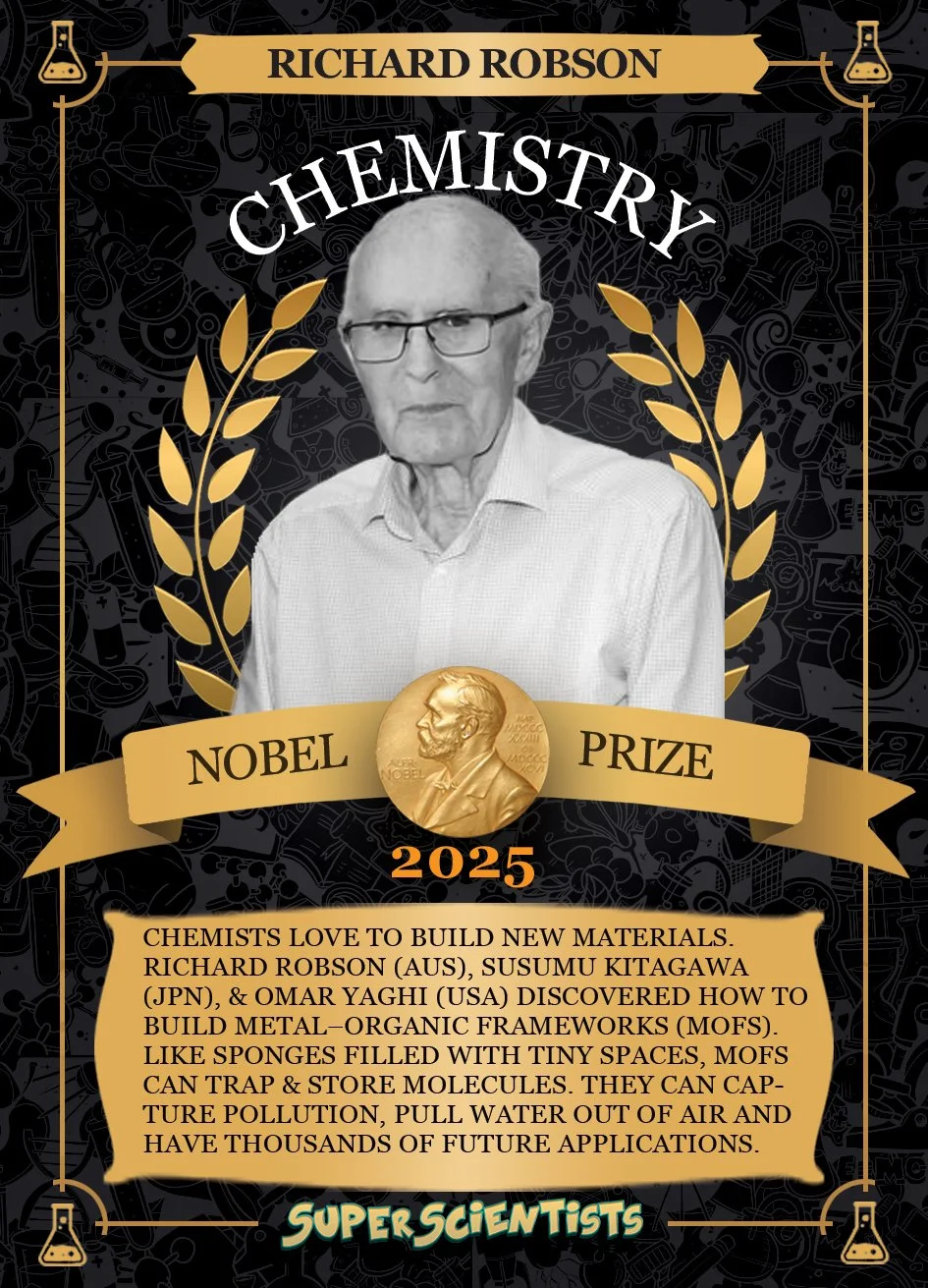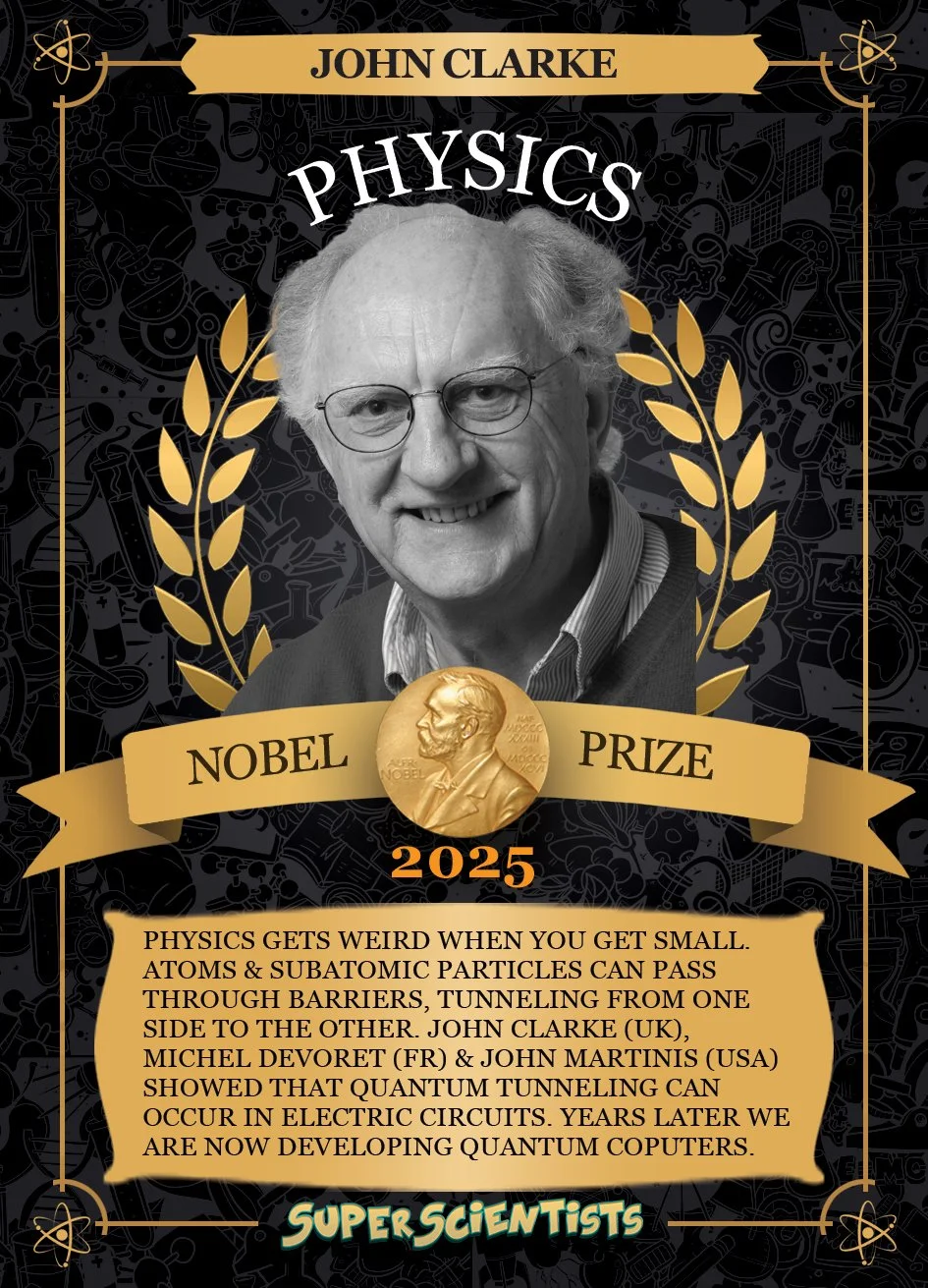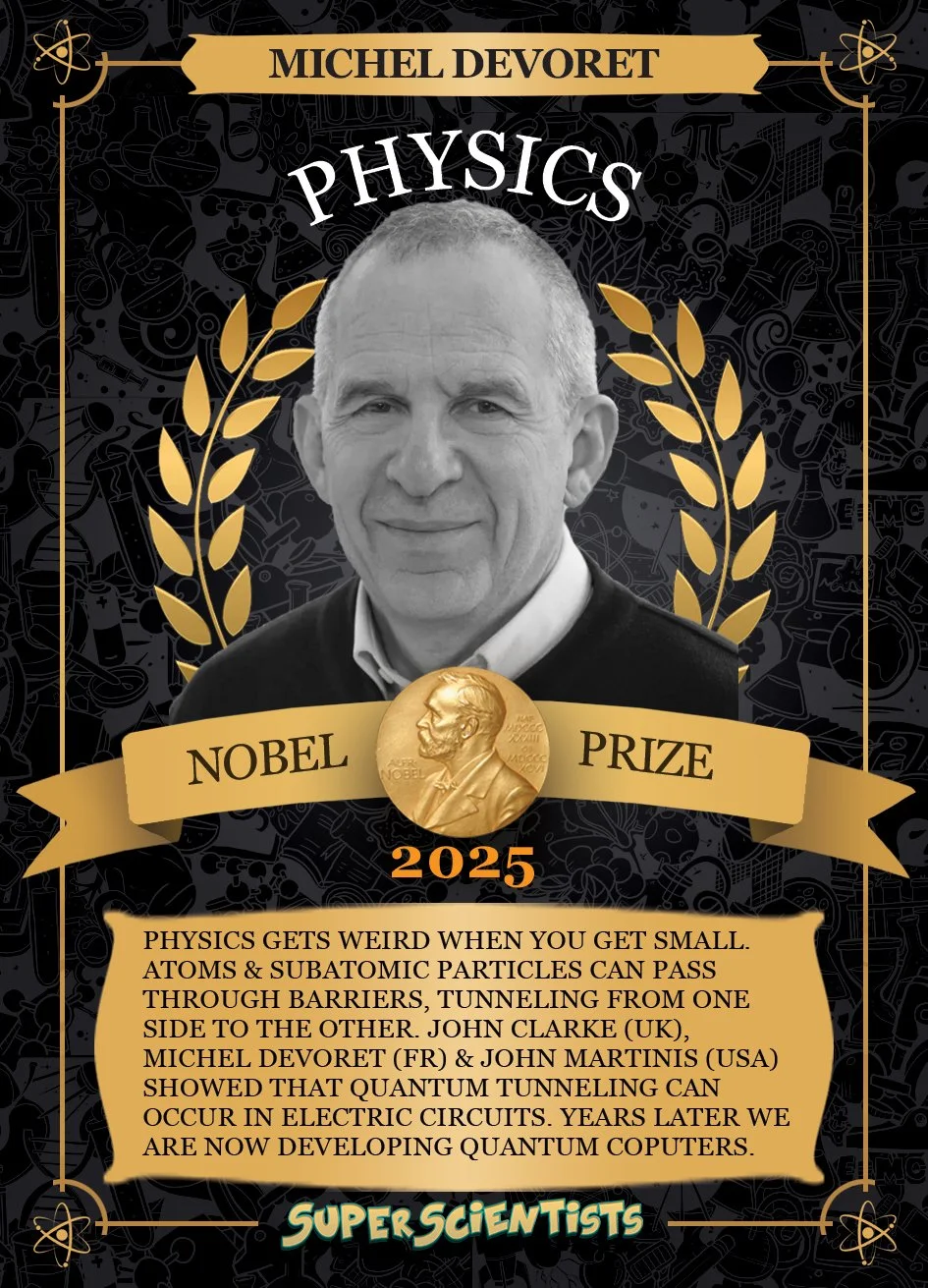Join us at the Goethe-Institut in Joburg (119 Jan Smuts) on November 22nd for a screening of our animation short as part of the free Science Film Festival Family Day in collaboration with Play Africa. The day lasts from 12-5pm and our film will screen at 1230pm. We’d hoped to have one of the scientists there on the day, but they are spending their Saturday doing science at the Cradle of Humankind.
We’ve been busy with some outreach events over the last few weeks, attending the Eskom Science Expo, organising our own messy event (we made oobleck with the kids) at a local library as part of National Science Week and attending a career expo at Ushaka Marine World. It’s been great fun interacting with all these young enthusiastic learners and sharing some of the awesome science and scientists that are working in South Africa and the continent.
Chemists are atomic architects, building new molecules and materials to push the limits of what can be done. The 2025 Nobel for Chemistry was awarded to Richard Robson (Australia), Susumu Kitagawa (Japan) and Omar Yahghi (USA) for the development of metal-organic frameworks (MOFs). These crystalline materials are like the framework of a building, with metal ions at a join point, or node, and then large organic molecules as the connectors between nodes. Because of this arrangement MOFs have large (relatively speaking) pores, or spaces, within them. You can think of them like a sponge but with very regularly spaced holes. Because of this structure MOFs can trap and store different molecules. This leads to some very cool things including the ability to pull water out of the air, separate pollution from air (including CO2) or water, catalyse chemical reactions and act as sensors. There are thousands of applications for MOFs. Like with all of the Nobel Prizes awarded this year we’ve only just begun to scratch the surface of what these discoveries will lead to.
Physics gest super weird at the extremes. Whether it’s the speed of light and the expansion of the Universe or atomic and subatomic particles and their behaviours, it just doesn’t make intuitive sense. If you throw a ball at a wall it bounces back but this isn’t always true for particles at the atomic and subatomic level. They can sometimes pass right through a barrier without any change to them or the barrier. This is called quantum tunneling and it relates to subatomic particles acting like probability distributions instead of what you would think of when you think of a particle - I did say it gets weird!
Quantum tunneling was thought to be something that only occurred at the subatomic level, but Drs John Clarke (UK), Michel Devoret (France) and John Martini (USA) were able to show that quantum tunneling can occur in an electric circuit at the macroscopic level - something that you can hold in your hand if you were inclined. In experiments they conducted in 1984/85 using superconducting materials they created an electrical circuit that showed quantum tunneling. Once you have a an electrical circuit you can do all sorts of things like build logic gates and do calculations. This then leads to quantum computers that are able to solve problems much more quickly than standard computers, quantum cryptology (incredibly fast code breaking) and quantum sensors.
Here’s a video on quantum computers - https://www.youtube.com/watch?v=B3U1NDUiwSA
Here’s a video on quantum cryptology - https://www.youtube.com/watch?v=lvTqbM5Dq4Q
The 2025 Nobel Prize for Physiology or Medicine has been awarded to Drs Mary Brunkow, Fred Ramsdell and Shimon Sakaguchi for their discovery of fundamental knowledge on how the immune system is controlled.
A properly working immune system recognises and destroy pathogens - viruses, bacteria, and fungi - without destroying your own cells. If the immune system does get out of control and targets your own cells it can cause diabetes, rheumatoid arthritis, multiple sclerosis, and other autoimmune diseases.
The cells at the heart of this story are T-cells. The thymus gland, an organ that is the middle of your upper chest, is the first way that these out-of-control T-cells are removed. If they react with human cells in the thymus they are destroyed. Dr Sakaguchi did experiments where he removed the thymus of mice just after they were born. He found that this caused the mice to develop autoimmune diseases, this made sense because without a thymus the the out of control T-cells were not removed. He then injected these same mice that did not have a thymus with blood from adult mice. The injected mice did not develop autoimmune diseases. This meant that something in the blood was able to regulate these out of control T- cells. Dr Sakaguchi was able to determine that these were a special type of T-cell called a CD25+ T-cell. These T-cells must be regulating and suppressing the out of control T-cells.
Dr Brunkow and Ramsdell’s research focused on understanding gene mutations in mice. They discovered the gene mutation of a strain of mice that suffered from autoimmune diseases. This gene was Foxp3. Mutations in the equivalent gene in humans also caused autoimmune disease.
Dr Sakaguchi then determined that the Foxp3 was involved in the development of the CD25+ T-cells. With a mutated Foxp3, the CD25+ cells didn’t develop normally and they weren’t able to destroy the out of control T-cells and autoimmune disease was the result.
Their research, that started nearly 30 years ago, is now being turned into therapies. Science takes a long time but is incredibly powerful.
Read more at the Nobel Prize website
It’s a sad day to learn of Jane Goodall’s passing. With seemingly unlimited energy at 91, she was advocating for nature, wildlife, humanity and, most of all , hope, until the very last day.
To honour her amazing legacy, one that undoubtably launched thousands of careers in wildlife conservation and animal behaviour, we are resharing our colouring pages that are free to download as A4 or 8.5x11s.
Learn more about why she is a hero to so many and how her work will continue through the Jane Goodall Institute. Looking for a film to watch that tells her story and her pioneering work at Gombe. This YouTube video is fantastic.
Other SuperScientists colouring pages as well as posters, comics and more are free to download here.
Our animation short, ”SuperScientists - Origins” will be seen by audiences in Thailand, Burkina Faso, South Africa, Namibia, Cameroon, Brazil, Indonesia, the Philippines, Malaysia, and Singapore through the Goethe Institute Science Film Festival. It will even get dubbed into a few different languages 🤙
Of 1503 films from 110 countries ours made the cut of 123 films in the festival. We can't wait for people across the world to see our little film and learn about some of the awesome science in South Africa.
We were featured in a lovely two page spread (just look at those layout skills) in Huisgenoot, South Africa’s most popular magazine by circulation. Lovely to see it and hear from Afrikaans speaking friends that it was a lekker article.

















